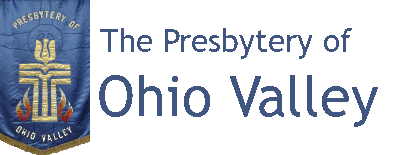Frequently Asked Questions
Where does the Presbyterian tradition come from?
We are a part of the historic Judeo-Christian Church and our foundational vision and beliefs seek to be rooted in Scripture and the Trinitarian faith of the Church through time. Therefore, we hold to the most basic beliefs of the Church catholic found in the Apostles' and Nicene Creeds.
On the Christian family tree we are a part of the historic protestant branch originating in Geneva, Switzerland, formed by John Calvin, a French scholar and preacher. Our Christian tradition is committed to a Reformed perspective on all of life. One of the key tenants of the Reformed tradition is that our beliefs and practices are reformed and always being reformed by the Word of God (Christ and Holy Scriptures).
Furthermore, we believe that the inner spiritual life is not only essential to the faith but that it must have with it a disciplined mind and an obedient heart that responds to God in service to our neighbors, expressing God’s work of faith, hope and love to all.
As Presbyterians in the USA we descend from the Reformed churches in Europe, particularly Scotland and Ireland. However, the early Church in the colonies also incorporated other Reformed congregations, such as the French Huguenots, Welsh Methodists, English Presbyterians (now called the United Reform Church), Czech Brethren, and Waldensians from Italy.
The Presbyterian Church (USA) was established in 1706 in Philadelphia and aided in the shaping of the Declaration of Independence and our country’s form of government. (The Rev. Dr. John Witherspoon was a signer on the Declaration of Independence. Of the 56 signers of the Declaration, 21% were active Presbyterian Christians).
As the country grew so did the need for new congregations and ministers. Seeing a dire need for missionaries in the western frontier of Indiana, the Presbyterian Church worked with the united Congregational churches and developed a plan that both hoped would be the solution to their western dilemma. It came in the form of the 1801 Plan of Union. It allowed for the exchange of clergy as the need arose.
Around 1805, a traveling minister, the Rev. Thomas Cleland, was sent to the Vincennes, Indiana area after settlers and the territorial Governor, who was Presbyterian, requested a minister. (The Governor was William Henry Harrison, later President of the United States). The first congregation was chartered in 1806 and named the Indiana Presbyterian Church.
Ohio Valley Presbytery is the successor to the Vincennes Presbytery formed in 1837, New Albany in 1857, . . .
In 2006, the Presbyterian Church in the USA celebrated the 200 years of Presbyterian Christian mission and ministry in Indiana.
